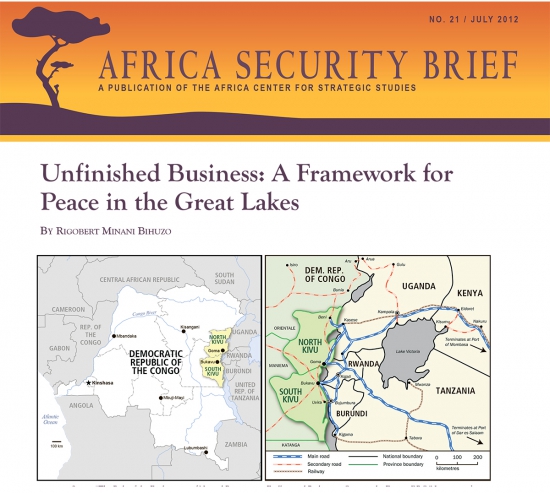Rigobert Minani BIHUZO
Unfinished Business: A Framework for Peace in the Great Lakes
11 äåêàáðÿ 2013
Landmark peace agreements signed in 2002 by 11 African governments and various nonstate armed groups were meant to end 7 years of war that had ravaged Africa’s Great Lakes region. A decade later, instability, tightly intertwined with regional geopolitics, persists. Recurring conflict has killed tens of thousands, mostly civilians, and displaced millions of others. The extended instability has also led to a collapse of basic social services and economic activity in parts of the Democratic Republic of the Congo (DRC), resulting in manifold more deaths due to malnutrition, lack of access to basic healthcare, and scarce livelihood opportunities. Amid this breakdown, barbaric forms of violence have emerged. During one 4-day period in the summer of 2011, nearly 400 women, men, and children were raped by militia fighters. Since 1996, there have reportedly been more than 200,000 rapes, which are mostly attributed to armed militias.
The provinces of North and South Kivu in the eastern DRC have been the epicenter of the fighting (see map). They are the largest source of recruits for a constantly shifting mix of militias. By one count, there are at least 19 nonstate militias comprising 7,000 to 17,000 fighters in the Kivus. Typical of the splintering seen in other extended conflicts, United Nations (UN) peacekeeping officials warn of a further “mushrooming of new groups.” Many of these groups are criminally oriented militias seeking to profit from trafficking the region’s natural resources. Some are led by local politicians and others are community self-defense forces. Alliances, goals, and leadership among these groups are often temporary, opportunistic, and at times contradictory
Âåðíóòüñÿ íàçàä
